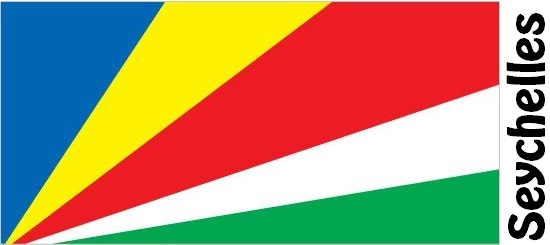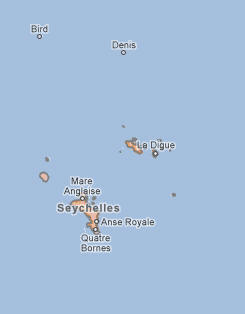Seychelles Facts
Seychelles, state of the western Indian Ocean; 450 km², 97 000 residents (2019).The Seychelles consists of the Central Group archipelago with 41 islands, including the main island of Mahé, and the Outer Islands with 74 islands, including the Amirants and the Aldabra Islands. The capital is Victoria (21,200 residents, 2012) on Mahé.

Country facts
- Republic of Seychelles / Republic of Seychelles
- Country abbreviation: SC
- Surface: 450 km²
- Population (2019): 97,000 residents
- Capital: Victoria
- Main language: Seychelles Creole
- State: Republic
- Head of State and Head of Government: Danny Faure (President)
- Per capita GDP (2018): US $ 16,434
- GNI per capita (2018): US $ 15,600
- Currency: 1 Seychelles Rupee = 100 cents
- Currency code: SCR
- Country number (telephony): 248
- Internet domain name: sc
- Time difference compared to Sweden: +3
- National Day: June 18 (adoption of a new constitution, 1993)
- Independence Day: June 29, 1976
Nature
- Land use: forest (11%), agricultural land (16%), other (73%)
- Highest mountain: Morne Seychellois (905 m asl)
Population
- Population density (2019): 216 residents per km²
- Natural population growth (2019): 0.9%; birth rate 17 ‰, death rate 8 ‰
- Age structure (2019): 0-14 years (23%), 15-64 (69%), 65- (8%)
- Life expectancy (2019): men 70 years, women 77 years
- Infant mortality (2019): 11 per 1,000 live births
- Population forecast 2050: 100,000 residents
- HDI (2017): 0.777 (place 62 of 189)
- Urbanization rate (2019): 57%
- Most populous city (2012): Victoria (21,200 residents)
Business
- Industry’s contribution to GDP (2017): agriculture (2%), industry (14%), service (84%)
- Exports (2017): US $ 565 million
- Main export products: canned tuna, frozen fish, oil products
- Main exporting countries: United Arab Emirates, France, United Kingdom
- Imports (2017): US $ 1,155 million
- Main import products: machinery, food, oil products
- Main importing countries: United Arab Emirates, France, Spain
- Railway network: nothing in operation
The main island of Mahé, like Silhouette, Praslin and La Digue, are all mountainous and have taken on special forms through the erosion. The outer islands are flat and rise only a few meters above sea level. The location of the archipelago just south of the equator provides a tropical climate with distinct oceanic character.
The president, who is both head of state and government, has great power. Presidential elections and elections to the Legislative National Assembly take place every five years. The country became independent in 1976.
Since the opening of the international airport at Mahé in 1971, the economy of Seychelles has been dominated by the tourism industry. The lack of agricultural land complicates the development of agriculture and explains the country’s great dependence on food imports. Rice, the most important basic food, is imported. Agricultural products exported are coconuts, cinnamon and vanilla. Fishing and export of both fresh and frozen and canned fish are also of economic importance.
Seychelles Map














































